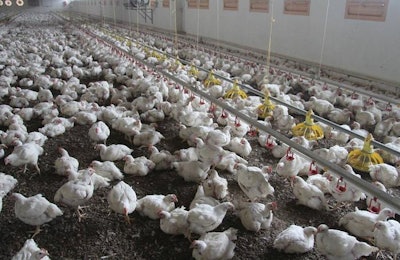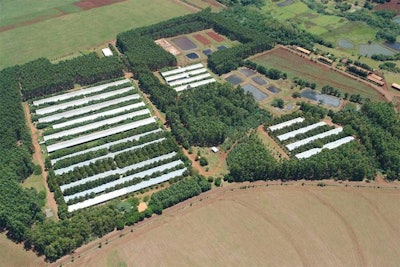
Odor emissions from poultry houses have become a limiting factor in building or expanding facilities in some parts of the world, and existing facilities run the risk of incurring high costs related to environmental degradation.
While odor control in poultry houses often seeks to reduce the impact of odor emissions once they enter the environment, improving a bird’s gut health can help to minimize the cause of odor at source.
Supplementation of poultry diets with phytogenics, or other feed additives, offers a relatively new approach to odor management, reducing emissions through improved digestibility and feed efficiency.
Low feed digestibility, poor digestive tract health and decreased gut performance can contribute significantly to environmental emissions and odor production in the poultry house.
Low feed digestibility not only results in poor feed efficiency, but also entails negative effects in the birds’ digestive tract. Low digestibility results in greater amounts of undigested feed in the gut, which is potentially subjected to fermentation by intestinal microbiota.
The presence of undigested proteins and amino acids in the gut favors production of undesired metabolites, such as biogenic amines and ammonia that are then excreted by birds into the environment.
Additionally, poor digestibility is associated not only with higher occurrence of intestinal disorders, but with higher mortality rates and greater economic losses.
Improving gut performance
While phytogenic feed additives (PFAs) are categorized as flavoring substances, they contain active compounds that exert biological effects in the organism.
Addressing gut health can improve bird performance by fully utilizing the nutrients in feed, thereby reducing the amount of undigested nutrients emitted into the poultry house.
Various scientific papers indicate that phytogenic substances including herbs, spices, non-volatile extracts and essential oils have the potential to promote feed efficiency and growth rates in poultry.
Studies have looked at the efficacy of various compounds of essential oils for their biological activities, and several plant-derived compounds have shown antimicrobial, anti-inflammatory, antioxidant and fungicidal effects.
Parameters influenced by phytogenic feed additives include the secretion of digestive juices and enzymes, the enhancement of gut protection, changes in the intestinal morphology, improvement in nutrient utilization (feed efficiency) and consequently enhanced performance, whereby these parameters are interrelated with each other.
Odor emissions from poultry houses can be problematic and depend on various factors, but addressing potential emissions at the source through managing intestinal help can form part of an odor control program, so lessening their impact on the broader environment.

Several actions relating to farm and diet management, along with banks of trees around poultry houses, can reduce odor and other emissions.
Seven ways to reduce poultry house odor emissions
Odors from poultry production can be reduced in a variety of ways. These include:
- Keep litter dry by increasing the exposure of litter and manure to air/sun. This will limit the anaerobic processes by reducing moisture from diarrhea or drinking water into litter.
- Optimization of poultry stocking density helps limit excessive moisture in the poultry house, so reducing anaerobic processes.
- Adjusting ventilation rate according to climate and temperature of the poultry house is a key aspect affecting odor formation.
- Adjusting temperature is of prime importance relating to stall climate and welfare.
- Ration composition and diet management, provision of balanced complete diets is of high importance. Problems occurring due to high-performance genetics, feed formulation and medication can lead to production of wet manure, causing increased ammonia and odor release alongside reduced broiler performance and feed efficiency.
- Improve nutrient digestibility. This could also be achieved by supplementing diets with additives.
- Planting trees around poultry houses has been reported to reduce dust, ammonia and odor emissions.
To learn more about controlling poultry house odors, read:

















